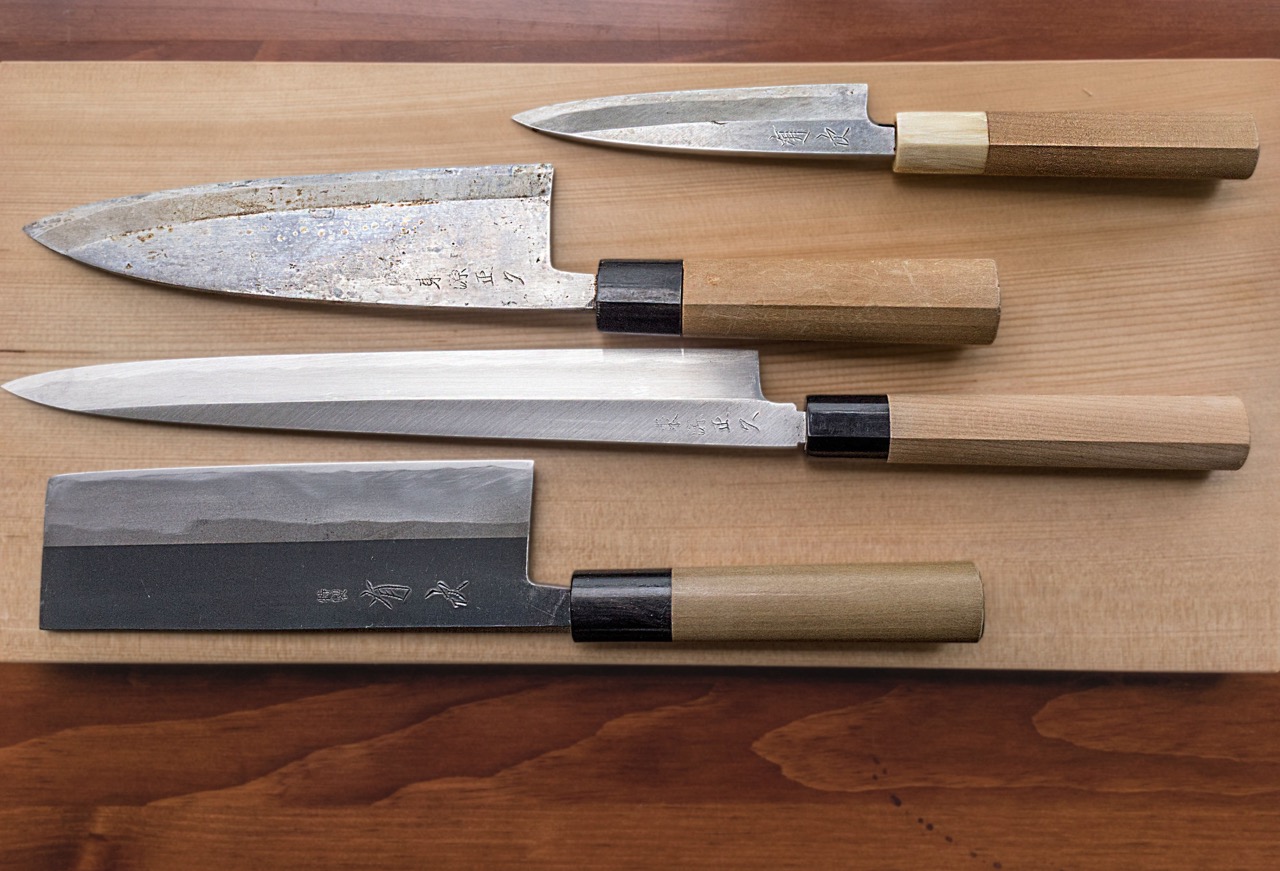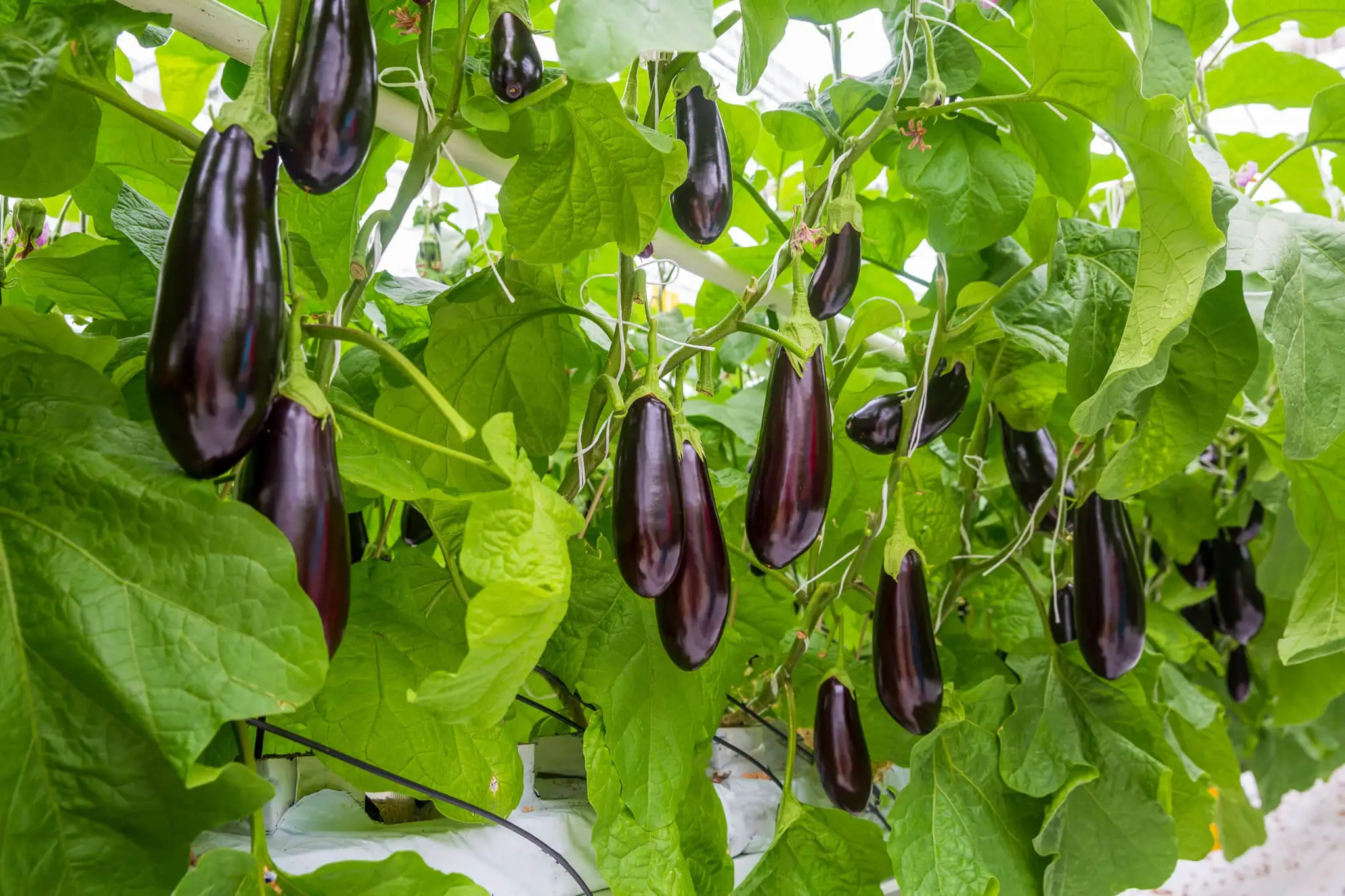

Articles
How To Store Japanese Eggplant
Modified: August 17, 2024
Learn the best methods for storing Japanese eggplant with these helpful articles, ensuring they stay fresh and flavorful for longer periods.
(Many of the links in this article redirect to a specific reviewed product. Your purchase of these products through affiliate links helps to generate commission for Storables.com, at no extra cost. Learn more)
Introduction
Japanese eggplant, also known as aubergine or nasu, is a versatile and delicious vegetable that is commonly used in various cuisines, including Japanese, Chinese, and Mediterranean dishes. Its delicate flavor and firm texture make it a favorite ingredient in stir-fries, tempura, curries, and grilled dishes. Whether you grow your own Japanese eggplant or purchase it from a local market, it’s important to know how to store it properly to maintain its freshness and flavor.
Proper storage of Japanese eggplant plays a crucial role in preserving its quality and extending its shelf life. By following a few simple guidelines, you can ensure that your eggplant remains fresh and flavorful for an extended period of time. In this article, we will explore different methods for storing Japanese eggplant, including refrigeration, freezing, and preservation in oil or vinegar.
To start, it’s essential to choose the right Japanese eggplant and prepare it properly before storing it. Look for eggplants that are firm, glossy, and free from bruises or blemishes. Avoid selecting eggplants that feel soft or have wrinkled skin, as they may be overripe and prone to spoilage.
Once you’ve chosen your eggplant, it’s time to prepare it for storage. Start by rinsing the eggplant under cool running water to remove any dirt or debris. Pat it dry with a paper towel or clean kitchen cloth. Trim off the stem and cut the eggplant into desired shapes or sizes, depending on your preference or recipe requirements.
Now that your Japanese eggplant is ready, let’s explore the different methods of storing it to ensure its longevity and freshness. These methods include refrigeration, freezing, and preserving the eggplant in oil or vinegar. Each method has its advantages and is suitable for different purposes. Let’s delve into the details in the next sections.
By learning how to store Japanese eggplant properly, you can enjoy this versatile and delectable vegetable long after its peak season. So, let’s dive into the specific storage methods, starting with refrigeration, and discover how to keep your Japanese eggplant fresh and flavorful for an extended period.
Key Takeaways:
- Properly storing Japanese eggplant is essential for maintaining its freshness and flavor. Whether refrigerating, freezing, or preserving, the key is to choose, prepare, and package the eggplant effectively to extend its shelf life.
- By mastering various storage methods, you can enjoy the unique taste and texture of Japanese eggplant long after its peak season. From refrigeration to pickling, each method offers a flavorful way to preserve this versatile vegetable.
Read more: How To Store Eggplant In Freezer
Choosing and Preparing Japanese Eggplant
Choosing the right Japanese eggplant and properly preparing it is essential for maintaining its quality and flavor. Here are some tips to help you select and prepare your eggplant before storing:
1. Selection:
– Look for eggplants that are firm and have smooth, shiny skin. Avoid those with soft spots or wrinkled skin, as they may be overripe or spoiled.
– The color of Japanese eggplant can vary, ranging from deep purple to a lighter shade of purple or even green. Choose the color that appeals to you, as it won’t impact the taste or quality.
2. Cleaning:
– Rinse the eggplant under cold running water to remove any dirt or residue. You can lightly scrub it with a vegetable brush, especially if there are stubborn stains.
– Gently pat the eggplant dry with a clean kitchen towel or paper towel. Moisture on the surface can contribute to mold growth during storage.
3. Trimming:
– Remove the stem by cutting it off with a sharp knife. This will make it easier to cut the eggplant into the desired shape for your recipe later on.
– Optionally, you can remove the skin of the eggplant if you prefer a softer texture or want to reduce bitterness. Score the skin with a knife and peel it off using your fingers or a peeler.
4. Slicing:
– Slice the eggplant into rounds, strips, or cubes, depending on your culinary preferences or the specific recipe you plan to use. Thinner slices or cubes will cook faster, while thicker cuts will have more texture.
5. Salting (optional):
– This step is often recommended to extract excess moisture and reduce bitterness in the eggplant.
– Sprinkle salt over the sliced eggplant and let it sit for about 15-30 minutes. Rinse the salt off and thoroughly pat the eggplant dry before storing or cooking.
Properly choosing and preparing your Japanese eggplant will not only help maintain its flavor but also make it easier to handle during storage and cooking. Once your eggplant is ready, you can explore the different storage methods to keep it fresh for longer.
Storing Japanese Eggplant in the Refrigerator
One of the most convenient ways to store Japanese eggplant is by placing it in the refrigerator. When stored properly, the refrigerator can help maintain the freshness and quality of the eggplant for up to a week. Here’s how to store Japanese eggplant in the refrigerator:
1. Wrap individually:
– Wrap each individual eggplant in a paper towel or place it in a perforated plastic bag. This helps absorb excess moisture and prevents condensation, which can lead to spoilage.
– Alternatively, you can place the eggplant in a reusable produce bag or a loosely closed plastic bag, allowing some air circulation.
2. Store in the crisper drawer:
– Place the wrapped eggplants in the crisper drawer of your refrigerator. The crisper drawer helps maintain proper humidity levels, which is crucial for preserving the freshness of the eggplant.
– If you don’t have a crisper drawer, you can store the wrapped eggplants on a shelf in the refrigerator. Just make sure to keep them away from foods with strong odors, as eggplant can absorb flavors easily.
3. Avoid stacking or overcrowding:
– It’s important to avoid stacking or overcrowding the eggplants in the refrigerator, as this can lead to uneven cooling and potential damage.
– If you have a large number of eggplants, consider storing them in multiple containers or using a larger storage bag while still ensuring proper airflow.
4. Check periodically:
– Periodically check on the stored eggplants to ensure they remain fresh. Discard any eggplants that show signs of spoilage, such as mold, mushiness, or a foul odor.
– If you notice any condensation or moisture buildup inside the wrapping, it’s a good idea to rewrap the eggplants with fresh paper towels to absorb the excess moisture.
By following these steps, you can extend the shelf life of Japanese eggplant and keep it fresh for a longer period in the refrigerator. Remember, storing eggplant in the refrigerator is suitable for short-term storage, and it’s best to consume them as soon as possible for the best flavor and texture.
Freezing Japanese Eggplant
If you have an abundance of Japanese eggplant and want to preserve it for an extended period, freezing is a great option. Freezing allows you to store the eggplant for several months while retaining its flavor and texture. Here’s how to freeze Japanese eggplant effectively:
1. Blanching:
– Start by blanching the eggplant, a process that helps maintain its color, texture, and flavor during freezing.
– Bring a large pot of water to a boil and prepare a bowl of ice water. Cut the eggplant into desired shapes or slices.
– Place the eggplant in the boiling water for about 2-3 minutes, then quickly transfer them to the ice water to halt the cooking process. This step helps preserve the crispness and color of the eggplant.
2. Draining and patting dry:
– After blanching, drain the eggplant thoroughly to remove excess water. You can place them on a clean kitchen towel or paper towels to absorb the water.
– Pat dry the eggplant gently to remove any remaining moisture. This step is crucial to prevent freezer burn and maintain the quality of the frozen eggplant.
3. Pack and seal:
– Place the blanched and dried eggplant into airtight freezer-safe containers or resealable plastic bags. Be sure to remove as much air as possible to prevent freezer burn.
– Label the containers or bags with the date and contents for easy reference in the future.
4. Freezing and storage:
– Place the packed eggplant in the freezer, making sure they are arranged in a single layer if using bags. If using containers, stack them loosely without overloading the freezer.
– Store the frozen eggplant at a temperature of 0°F (-18°C) or below for optimal results. This will help maintain the flavor and texture of the eggplant during storage.
5. Thawing and using:
– When you’re ready to use the frozen eggplant, remove the desired amount from the freezer and thaw it in the refrigerator overnight.
– Once thawed, the eggplant may appear softer due to the freezing process. It’s best to use them in recipes that involve cooking, such as stir-fries, casseroles, or curries.
By following these steps, you can successfully freeze Japanese eggplant and have a convenient supply of this versatile vegetable available for use throughout the year. Whether you blanch the slices or cubes before freezing or freeze the eggplant as it is, the freezing process will help preserve the taste and texture, allowing you to enjoy the flavors of summer even during the colder months.
Store Japanese eggplant in a cool, dry place, such as the crisper drawer of your refrigerator. Keep them unwashed in a perforated plastic bag to maintain freshness for up to a week. Avoid storing them near ethylene-producing fruits, as this can cause them to spoil faster.
Preserving Japanese Eggplant in Oil or Vinegar
Preserving Japanese eggplant in oil or vinegar is a fantastic way to add flavor and extend the shelf life of this versatile vegetable. The preservation process enhances the taste of the eggplant while providing an excellent base for various culinary creations. Here’s how to preserve Japanese eggplant in oil or vinegar:
1. Select and prepare the eggplant:
– Choose firm and fresh Japanese eggplants for preservation. Wash them thoroughly and trim off the stems.
– Cut the eggplants into desired shapes or slices, keeping in mind the intended use and presentation.
2. Salt and drain the eggplant:
– Sprinkle salt generously over the sliced eggplant to draw out excess moisture and reduce bitterness.
– Place the salted eggplant in a colander or sieve and let it sit for about 30 minutes to 1 hour. This will allow the salt to penetrate and extract moisture from the eggplant.
– Rinse the eggplant slices to remove the excess salt, then gently squeeze them to remove as much water as possible.
3. Blanche and cool (optional):
– Some recipes call for blanching the eggplant slices in boiling water for a short time to soften them slightly. This step is optional and depends on personal preference and the desired final texture.
4. Prepare the preserving solution:
– For preserving in oil, choose a high-quality oil such as extra virgin olive oil. Heat the oil in a saucepan over low heat until warm, but not boiling.
– Alternatively, for preserving in vinegar, select a high-quality vinegar such as white wine vinegar or rice vinegar. Heat the vinegar in a saucepan until heated through but not boiling.
5. Pack and store:
– Place the prepared eggplant slices into sterilized glass jars, layering them evenly. Then, pour the warm oil or vinegar over the eggplant, making sure to cover all slices completely.
– Use a clean utensil to press down gently on the eggplant slices to remove any air bubbles and ensure they are fully submerged in the preserving solution.
– Seal the jars tightly and store them in a cool, dark place such as a pantry or cellar. The preserved eggplant can be consumed after a few days but will taste even better when left to marinate for a week or more.
6. Enjoy and use in various dishes:
– Preserved Japanese eggplant in oil or vinegar can be used in a variety of dishes. They add a burst of flavor to salads, antipasto platters, sandwiches, pasta dishes, and more.
– When using the preserved eggplant, remove the desired amount from the jar using clean utensils. If necessary, rinse off excess oil or vinegar before incorporating them into your recipe.
Preserving Japanese eggplant in oil or vinegar not only enhances its taste but also offers a convenient and flavorful ingredient to have on hand. With this preservation method, you can enjoy the rich flavors of eggplant throughout the year and elevate your culinary creations with a touch of homemade goodness.
Read more: How To Store Cut Eggplant
Other Storage Methods for Japanese Eggplant
Aside from refrigeration, freezing, and preserving in oil or vinegar, there are a few other storage methods you can consider for Japanese eggplant. These methods offer alternatives for keeping your eggplant fresh and flavorful. Let’s explore these options:
1. Dehydrating:
– Dehydrating Japanese eggplant involves removing most of the moisture content, which extends its shelf life and creates a concentrated flavor.
– Slice the eggplant thinly and evenly, then spread the slices out on a dehydrator tray or baking sheet.
– Dry the slices in a dehydrator or in a low-temperature oven (around 135°F or 57°C) until they are leathery and crisp. This process can take several hours to a day or more, depending on the thickness of the slices.
– Store the dehydrated eggplant in airtight containers in a cool, dark place. You can rehydrate the slices by soaking them in warm water before using them in recipes.
2. Canning:
– Canning Japanese eggplant allows you to store it for an extended period without the need for refrigeration or freezing.
– Choose small eggplants that can fit into canning jars. Wash, trim, and slice the eggplants as desired.
– Prepare a canning brine or sauce using vinegar, water, spices, and seasonings. Pack the eggplant slices into sterilized canning jars and cover them completely with the brine or sauce.
– Process the jars in a water bath canner according to the recommended canning guidelines for your specific recipe.
– Once properly sealed, store the canned eggplant in a cool, dark place. Use within the recommended shelf life specified in your recipe.
3. Pickling:
– Pickling is another popular method for preserving Japanese eggplant, allowing you to enjoy tangy, flavorful eggplant all year round.
– Slice the eggplant into small, bite-sized pieces or spears. Salt the slices and let them sit for about 30 minutes to draw out excess moisture.
– Rinse the salt off the eggplant slices and pat them dry. Pack the slices into sterilized pickling jars, along with spices, herbs, and a pickling brine made from vinegar, water, sugar, and salt.
– Seal the jars tightly and store them in a cool, dark place. The pickled eggplant can be enjoyed after a few days but will develop more flavor as it sits longer.
By considering these alternative storage methods, you can expand your options for preserving Japanese eggplant and enjoy its flavors in a variety of ways. Choose the method that suits your preferences and culinary needs, and experiment with different recipes and preparations to make the most of this versatile vegetable.
Conclusion
Knowing how to properly store Japanese eggplant is key to maintaining its freshness, flavor, and quality. Whether you have an abundance from your garden or want to make the most of a market purchase, there are various storage methods to keep your eggplant in optimal condition.
By choosing firm and fresh eggplants, rinsing and drying them thoroughly, and trimming them to your desired shape, you set the stage for successful storage. Refrigeration is a convenient option for short-term storage, where wrapping the eggplant in a paper towel and placing them in the crisper drawer helps maintain their freshness for up to a week.
If you have an excess of Japanese eggplant, freezing is an excellent long-term storage solution. Blanching the eggplant before freezing helps retain its color and texture. Properly packaged in airtight containers or bags, frozen eggplant can be stored for several months.
Preserving Japanese eggplant in oil or vinegar adds a burst of flavor and extends its shelf life. By salting and draining the eggplant, then packing it in sterilized jars with warm oil or vinegar, you create a flavorful ingredient that can be used in various dishes, from salads to pasta.
Other storage methods like dehydrating, canning, and pickling offer alternative ways to store Japanese eggplant. Dehydrated slices can be stored in airtight containers for a concentrated flavor and rehydrated as needed. Canning and pickling methods provide a longer shelf life, allowing you to enjoy the tangy flavors of preserved eggplant throughout the year.
In conclusion, understanding how to store Japanese eggplant effectively ensures that you can enjoy its unique taste and texture even when it’s not in peak season. Whether you refrigerate, freeze, preserve, dehydrate, can, or pickle, the key is to properly prepare and package the eggplant to maintain its freshness and optimal flavor. Choose the storage method that suits your needs and preferences, and enjoy the versatility of Japanese eggplant in your favorite recipes.
Frequently Asked Questions about How To Store Japanese Eggplant
Was this page helpful?
At Storables.com, we guarantee accurate and reliable information. Our content, validated by Expert Board Contributors, is crafted following stringent Editorial Policies. We're committed to providing you with well-researched, expert-backed insights for all your informational needs.















0 thoughts on “How To Store Japanese Eggplant”